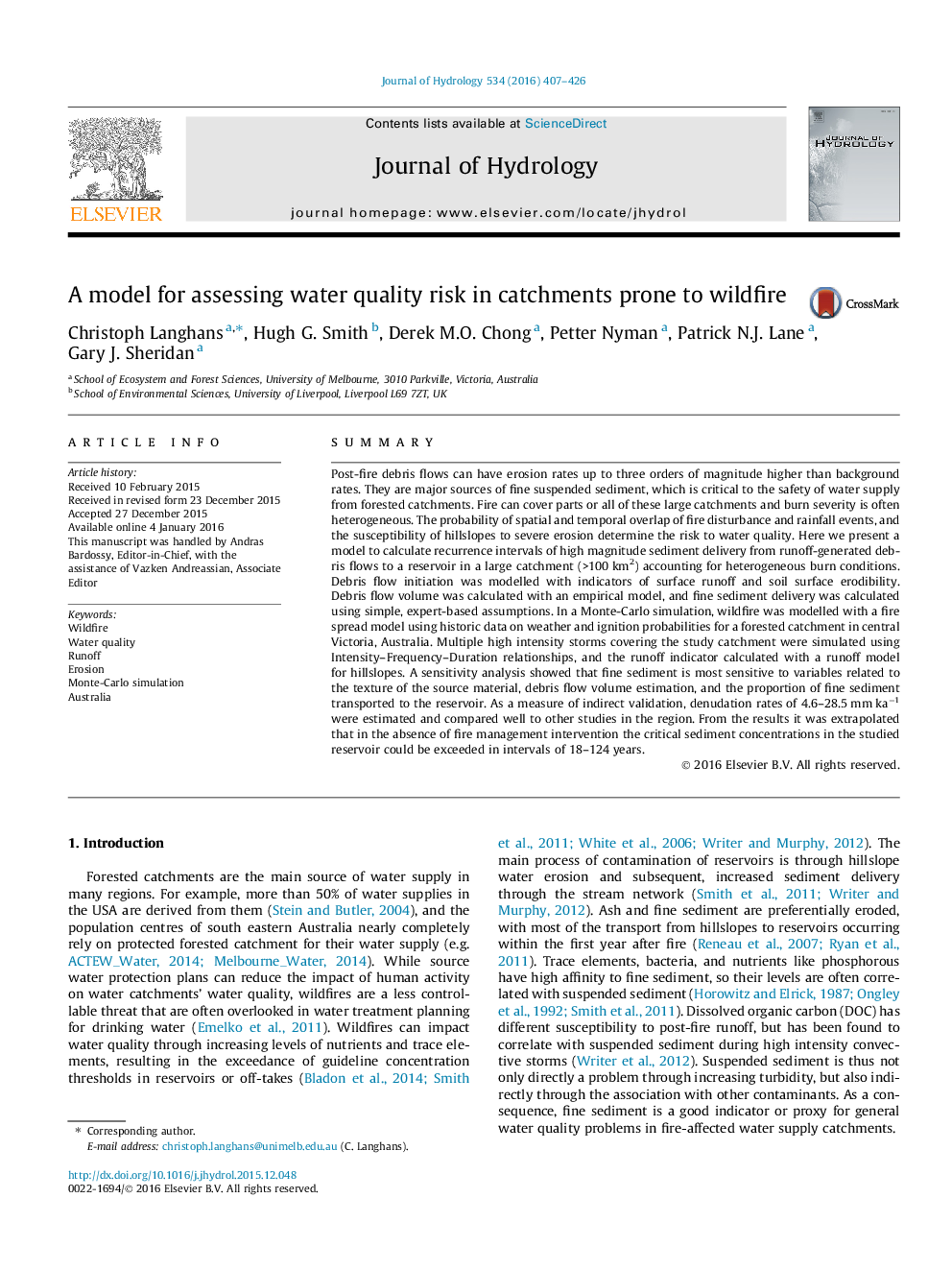| کد مقاله | کد نشریه | سال انتشار | مقاله انگلیسی | نسخه تمام متن |
|---|---|---|---|---|
| 6410360 | 1629918 | 2016 | 20 صفحه PDF | دانلود رایگان |
- Fire spread simulation for water quality risk assessment in large catchments.
- Sediment delivery probability from post-fire debris flows in Australia.
- Reservoir critical sediment concentration exceeded every 18-124Â years.
SummaryPost-fire debris flows can have erosion rates up to three orders of magnitude higher than background rates. They are major sources of fine suspended sediment, which is critical to the safety of water supply from forested catchments. Fire can cover parts or all of these large catchments and burn severity is often heterogeneous. The probability of spatial and temporal overlap of fire disturbance and rainfall events, and the susceptibility of hillslopes to severe erosion determine the risk to water quality. Here we present a model to calculate recurrence intervals of high magnitude sediment delivery from runoff-generated debris flows to a reservoir in a large catchment (>100 km2) accounting for heterogeneous burn conditions. Debris flow initiation was modelled with indicators of surface runoff and soil surface erodibility. Debris flow volume was calculated with an empirical model, and fine sediment delivery was calculated using simple, expert-based assumptions. In a Monte-Carlo simulation, wildfire was modelled with a fire spread model using historic data on weather and ignition probabilities for a forested catchment in central Victoria, Australia. Multiple high intensity storms covering the study catchment were simulated using Intensity-Frequency-Duration relationships, and the runoff indicator calculated with a runoff model for hillslopes. A sensitivity analysis showed that fine sediment is most sensitive to variables related to the texture of the source material, debris flow volume estimation, and the proportion of fine sediment transported to the reservoir. As a measure of indirect validation, denudation rates of 4.6-28.5 mm kaâ1 were estimated and compared well to other studies in the region. From the results it was extrapolated that in the absence of fire management intervention the critical sediment concentrations in the studied reservoir could be exceeded in intervals of 18-124 years.
Journal: Journal of Hydrology - Volume 534, March 2016, Pages 407-426
